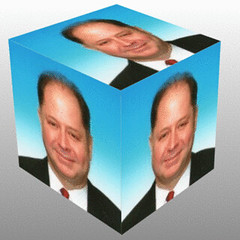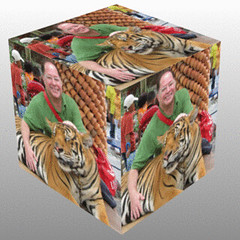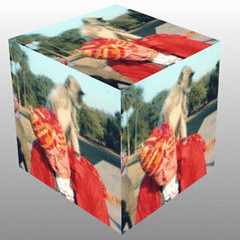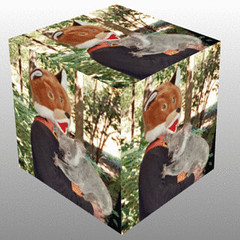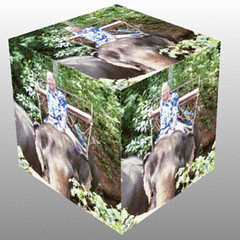Neural Communication
A Neuron’s Structure
How Neurons Communicate
How Neurotransmitters Influence Us
The Nervous System
The Peripheral Nervous System
The Central Nervous System
Neuroscience and Consciousness
The Endocrine System
Brain States and Consciousness
Selective Attention
Sleep and Dreams
Neural Communication – The body’s information system is built from billions of interconnected cells called neurons.
Neurobiologists and other investigators understand that humans and animals operate similarly when processing information.
Neuron- A nerve cell, or a neuron, consists of many different parts.
Parts of a Neuron
Cell Body: Life support center of the neuron.
Dendrites: Branching extensions at the cell body. Receive messages from other neurons.
Axon: Long single extension of a neuron, covered with myelin [MY-uh-lin] sheath to insulate and speed up messages through neurons.
Terminal Branches of axon: Branched endings of an axon that transmit messages to other neurons.
Action Potential – A neural impulse. A brief electrical charge that travels down an axon and is generated by the movement of positively charged atoms in and out of channels in the axon’s membrane.
Threshold: Each neuron receives excitatory and inhibitory signals from many neurons. When the excitatory signals minus the inhibitory signals exceed a minimum intensity (threshold) the neuron fires an action potential.
Action Potential Properties
All-or-None Response: A strong stimulus can trigger more neurons to fire, and to fire more often, but it does not affect the action potentials strength or speed.
Intensity of an action potential remains the same throughout the length of the axon.
Synapse
Synapse [SIN-aps] a junction between the axon tip of the sending neuron and the dendrite or cell body of the receiving neuron. This tiny gap is called the synaptic gap or cleft.
Neurotransmitters (chemicals) released from the sending neuron travel across the synapse and bind to receptor sites on the receiving neuron, thereby influencing it to generate an action potential.
Reuptake – Neurotransmitters in the synapse are reabsorbed into the sending neurons through the process of reuptake. This process applies the brakes on neurotransmitter action.
How Neurotransmitters Influence Us
Dopamine Pathways
Neurotransmitters
Lock & Key Mechanism
Neurotransmitters bind to the receptors of the receiving neuron in a key-lock mechanism.
Agonists
Antagonists
The Nervous System
The Peripheral Nervous System
The Central Nervous System
Nervous System: Consists of all the nerve cells. It is the body’s speedy, electrochemical communication system.
Central Nervous System (CNS): the brain and spinal cord.
Peripheral Nervous System (PNS): the sensory and motor neurons that connect the central nervous system (CNS) to the rest of the body.
The Nervous System
Kinds of Neurons
Sensory Neurons carry incoming information from the sense receptors to the CNS. Motor
Neurons carry outgoing information from the CNS to muscles and glands. Interneurons connect the two neurons.
Peripheral Nervous System
Somatic Nervous System: The division of the peripheral nervous system that controls the body’s skeletal muscles.
Autonomic Nervous System: Part of the PNS that controls the glands and other muscles.
The Nerves
Nerves consist of neural “cables” containing many axons. They are part of the peripheral nervous system and connect muscles, glands, and sense organs to the central nervous system.
Autonomic Nervous System (ANS)
Sympathetic Nervous System: Division of the ANS that arouses the body, mobilizing its energy in stressful situations.
Parasympathetic Nervous System: Division of the ANS that calms the body, conserving its energy.
Autonomic Nervous System (ANS)
Sympathetic NS “Arouses” (fight-or-flight)
Parasympathetic NS “Calms” (rest and digest)
The Endocrine System
Hormones are chemicals synthesized by the endocrine glands that are secreted in the bloodstream. Hormones affect the brain and many other tissues of the body.
Pituitary Gland
Thyroid & Parathyroid Glands
Adrenal Glands
Gonads
The Brain
Older Brain Structures
The Brainstem is the oldest part of the brain, beginning where the spinal cord swells and enters the skull. It is responsible for automatic survival functions.
Brainstem
-The Medulla [muh-DUL-uh] is the base of the brainstem that controls heartbeat and breathing.
-The Thalamus [THAL-uh-muss] is the brain’s sensory switchboard, located on top of the brainstem. It directs messages to the sensory areas in the cortex and transmits replies to the cerebellum and medulla.
– Cerebellum- The “little brain” attached to the rear of the brainstem. It helps coordinate voluntary movements and balance.
A brain lesion experimentally destroys brain tissue to study animal behaviors after such destruction.
Clinical Observation – Clinical observations have shed light on a number of brain disorders. Alterations in brain morphology due to neurological and psychiatric diseases are now being catalogued.
Electroencephalogram (EEG) – An amplified recording of the electrical waves sweeping across the brain’s surface, measured by electrodes placed on the scalp.
PET Scan
MRI Scan
The Limbic System – The Limbic System is a doughnut-shaped system of neural structures at the border of the brainstem and cerebrum, associated with emotions such as fear, aggression and drives for food and sex. It includes the hippocampus, amygdala, and hypothalamus.
Amygdala- The Amygdala [ah-MIG-dah-la] consists of two lima bean-sized neural clusters linked to the emotions of fear and anger.
Hypothalamus – The Hypothalamus lies below (hypo) the thalamus. It directs several maintenance activities like eating, drinking, body temperature, and control of emotions. It helps govern the endocrine system via the pituitary gland.
Reward Center
Rats cross an electrified grid for self-stimulation when electrodes are placed in the reward (hypothalamus) center (top picture). When the limbic system is manipulated, a rat will navigate fields or climb up a tree (bottom picture).
The Cerebral Cortex
The intricate fabric of interconnected neural cells that covers the cerebral hemispheres. It is the body’s ultimate control and information processing center.
Structure of the Cortex
Each brain hemisphere is divided into four lobes that are separated by prominent fissures. These lobes are the frontal lobe (forehead), parietal lobe (top to rear head), occipital lobe (back head) and temporal lobe (side of head).
Functions of the Cortex
The Motor Cortex is the area at the rear of the frontal lobes that control voluntary movements.
The Sensory Cortex (parietal cortex) receives information from skin surface and sense organs.
Visual Function
The functional MRI scan shows the visual cortex is active as the subject looks at faces.
Auditory Function
The functional MRI scan shows the auditory cortex is active in patients who hallucinate.
Association Areas
More intelligent animals have increased “uncommitted” or association areas of the cortex.
Language – Broca’s Region & Wernicke’s Area
Specialization & Integration
Brain activity when hearing, seeing, and speaking words
The Brain’s Plasticity
The brain is sculpted by our genes but also by our experiences.
Plasticity refers to the brain’s ability to modify itself after some types of injury or illness.
Our Divided Brain
Our brain is divided into two hemispheres.
The left hemisphere processes reading, writing, speaking, mathematics, and comprehension skills. In the 1960s, it was termed as the dominant brain.
Splitting the Brain
A procedure in which the two hemispheres of the brain are isolated by cutting the connecting fibers (mainly those of the corpus callosum) between them.
Split Brain Patients
With the corpus callosum severed, objects (apple) presented in the right visual field can be named. Objects (pencil) in the left visual field cannot.
Divided Consciousness
Right-Left Differences in the Intact Brain
Forms of Consciousness
Consciousness, modern psychologists believe, is an awareness of ourselves and our environment.
Selective Attention
Our conscious awareness processes only a small part of all that we experience. We intuitively make use of the information we are not consciously aware of.
Inattentional Blindness
Inattentional blindness refers to the inability to see an object or a person in our midst. Simons &
Chabris (1999) showed that half of the observers failed to see the gorilla-suited assistant in a ball passing game.
Change Blindness – Change blindness is a form of inattentional blindness in which two-thirds of individuals giving directions failed to notice a change in the individual asking for directions.
Sleep & Dreams
Sleep – the irresistible tempter to whom we inevitably succumb.
Biological Rhythms and Sleep
Circadian Rhythms occur on a 24-hour cycle and include sleep and wakefulness. Termed our “biological clock,” it can be altered by artificial light.
Sleep Stages
Measuring sleep: About every 90 minutes, we pass through a cycle of five distinct sleep stages.
Awake but Relaxed
Sleep Stages 1-2
Sleep Stages 3-4
Stage 5: REM Sleep
90-Minute Cycles During Sleep
Why do we sleep?
Sleep Deprivation
Accidents
Sleep Theories
Sleep Disorders
Insomnia: A persistent inability to fall asleep.
Narcolepsy: Overpowering urge to fall asleep that may occur while talking or standing up.
Sleep apnea: Failure to breathe when asleep.
Sleep Disorders
Children are most prone to:
Night terrors: The sudden arousal from sleep with intense fear accompanied by physiological reactions (e.g., rapid heart rate, perspiration) which occur during Stage 4 sleep.
Sleepwalking: A Stage 4 disorder which is usually harmless and unrecalled the next day.
Sleeptalking: A condition that runs in families, like sleepwalking.
Dreams
The link between REM sleep and dreaming has opened up a new era of dream research.
What We Dream
Negative Emotional Content: 8 out of 10 dreams have negative emotional content.
Failure Dreams: People commonly dream about failure, being attacked, pursued, rejected, or struck with misfortune.
Sexual Dreams: Contrary to our thinking, sexual dreams are sparse. Sexual dreams in men are 1 in 10; and in women 1 in 30.
Why We Dream
Wish Fulfillment: Sigmund Freud suggested that dreams provide a psychic safety valve to discharge unacceptable feelings. The dream’s manifest (apparent) content may also have symbolic meanings (latent content) that signify our unacceptable feelings.
Information Processing: Dreams may help sift, sort, and fix a day’s experiences in our memories.
Why We Dream
Physiological Function: Dreams provide the sleeping brain with periodic stimulation to develop and preserve neural pathways. Neural networks of newborns are quickly developing; therefore, they need more sleep.
Why We Dream
Activation-Synthesis Theory: Suggests that the brain engages in a lot of random neural activity. Dreams make sense of this activity.
Cognitive Development: Some researchers argue that we dream as a part of brain maturation and cognitive development.
Dream Theories
WereVerse Universe Baby!




